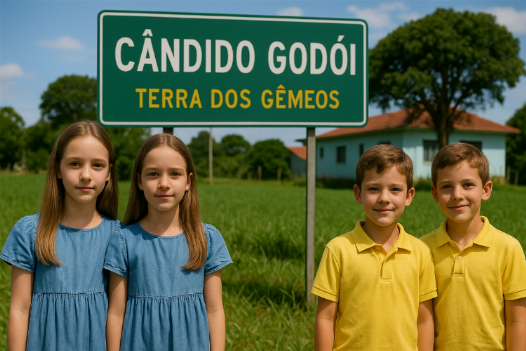In southern Brazil lies a small town where twins are born at an extraordinary rate. Cândido Godói, often dubbed the "Land of Twins," has baffled scientists and intrigued visitors with its high incidence of twin births.
What secrets does this town hold?
1. Context or Origin
Cândido Godói is a municipality in the state of Rio Grande do Sul, Brazil, near the Argentine border. With a population of approximately 6,000, the town has gained international attention for its unusually high number of twin births.
The phenomenon is particularly concentrated in the district of Linha São Pedro, where the twinning rate is significantly higher than the global average.
2. Development of the Phenomenon
Several theories have been proposed to explain the high twinning rate in Cândido Godói:
-
Genetic Factors: The town's population is largely of German descent, and some researchers suggest that a genetic founder effect may be responsible for the increased incidence of twins. A study analyzing baptism records from 1959 to 2008 found no significant temporal trends but did support the founder effect hypothesis .
-
Nazi Experimentation Theory: A controversial theory posits that Nazi doctor Josef Mengele conducted experiments in the area during the 1960s, aiming to increase twin births. However, this theory lacks concrete evidence and has been largely debunked by scientific studies .
3. Curiosities or Implications
-
Twin Festival: The town celebrates its unique status with a biennial festival honoring twins, attracting visitors and researchers alike.
-
Cultural Impact: The high number of twins has become a point of pride for residents, influencing local culture and identity.
-
Scientific Interest: Cândido Godói continues to be a subject of genetic and demographic studies, contributing to our understanding of twinning phenomena.
4. Conclusion or Moral
Cândido Godói stands as a fascinating example of how genetics, history, and culture can intertwine to create a unique demographic anomaly. While the exact cause of its high twinning rate remains uncertain, the town continues to captivate scientists and tourists, embodying the mysteries that small communities can hold.
